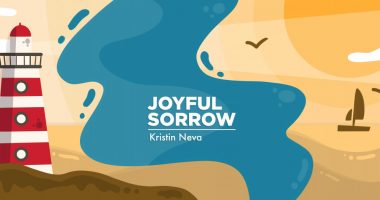Navigating Interventions With the Ongoing Losses of ALS

My husband, Todd, began monitoring his breathing after he was diagnosed with ALS. We were told that he’d need to have surgery to insert a feeding tube before his forced vital capacity (FVC) dipped below 50%, and so he had it measured every few months at an ALS clinic.
The respiratory therapist held a mouthpiece up to Todd’s lips, and as he blew the air out of his lungs, she cheered him on: “Go, go, go!”
The results were normal during the first visit. We celebrated at the second visit when his score didn’t decline appreciably, and we were told the small drop could be a random daily variation. But every subsequent visit was disheartening because there was always decline.
After it became too difficult to travel to the clinic, we had Todd’s lungs tested at a hospital just 10 minutes from our home. We tried to celebrate minimal declines. Todd chalked up the larger declines to having a slight respiratory bug or allergies, but he became increasingly discouraged and decided to slow the frequency of testing to every six months.
We tried to be positive if his FVC went down only a few points between visits. The news was bad, but not as bad as it could have been. We still had time. I’d track his breathing and project into the future. Where was he a year ago? If the progression continued at the same rate, where would he be in a year? In two years? How much time did we have? It’s a crazy way to live.
Todd kept going in for the tests because he wanted to make sure he scheduled his feeding tube surgery while he could still survive it, and he wasn’t keen on having the tube inserted any sooner than necessary.
Once he got the surgery, he quit having his breathing checked. It was too depressing. What was the point?
When he had his last test, he didn’t qualify for Medicare to pay for a noninvasive ventilator (NIV) yet. That was two years ago. If his FVC has continued to decline at the same rate, he would easily qualify now, but he doesn’t want to be tested.
It’s obvious he struggles more to cough, talk for long stretches, and project his voice. He says his breathing is fine, but I wonder if the headaches he sometimes wakes up with in the morning would be helped by NIV. In any case, I’d like to get the equipment and learn to use it before we are in panic mode.
I’ve suggested he go get the test. “If your breathing scores are too high to qualify for NIV, we’ll celebrate. If not, then we’ll get equipment that’ll help you.”
Maybe he’d feel better, and the equipment would improve his quality of life — if he could adjust to it. I’ve heard from some spouse caregivers who say their spouses didn’t end up using it much. I don’t know if Todd would get used to it, or if he would feel too claustrophobic. He wouldn’t be able to use his sip and puff HeadMouse, and so he’d need to figure out new adaptive technology to use his computer. Also, he prefers to sleep on his side and be rolled to the other side every hour or two. That might be tricky with hoses.
I think it’s worth trying. Many people with ALS get noninvasive ventilators, and they report that they sleep better and have more energy during the day.
Todd doesn’t want to go take the test. He gets anxious just thinking about it. He’s the one with the disease, so it’s ultimately his call.
We’ve been here before. I thought he should use a wheelchair sooner, but he wanted to walk as long as he could. When he finally got a power wheelchair, the disease had progressed to the point where he felt like it gave him more independence. Thankfully, he did not suffer a severe head injury in the stage when he was falling.
He wanted to wait to have the feeding tube inserted until his FVC was just above 50%, and I wasn’t pushing him on such an invasive procedure.
Thankfully, the feeding tube was already in place when he had an incident choking on pills, and so I began crushing them and giving them through the tube.
His independence actually has not been lost to intervention, but to the disease, and the intervention has made things better, but getting to the point of deciding to move forward with interventions is hard.
ALS is a disease of ongoing loss and change.
***
Note: ALS News Today is strictly a news and information website about the disease. It does not provide medical advice, diagnosis, or treatment. This content is not intended to be a substitute for professional medical advice, diagnosis, or treatment. Always seek the advice of your physician or other qualified health provider with any questions you may have regarding a medical condition. Never disregard professional medical advice or delay in seeking it because of something you have read on this website. The opinions expressed in this column are not those of ALS News Today or its parent company, BioNews Services, and are intended to spark discussion about issues pertaining to ALS.








Comments
Christopher Beutler
I completely feel your pain. My journey with ALS is almost identical. If he's waking up with headaches he's not getting the CO2 out of his lung. Moving to a bi-pap has improved my quality of life. Another sign of his lungs is if he is still dreaming. if he's not dreaming his diaphragm is not relaxed enough for him to achieve REM sleep. When you get the test to see if he is able to get a bi-pap. Take the test lying down. It will improve his sleep and energy. It actually brought my numbers up. And using a cough assist 3x a day helps keep the lungs strong. i would schedule an appointment with a respiration therapist. There are several techniques to keep the lungs healthy. best of luck to you and Todd. i pray for you.
Kristin Neva
Thanks for commenting, Christopher. He is still dreaming that so that is a good sign--we hadn't thought about that. Glad to hear the bi-pap is helping your quality of life.
Brian Stanfield
I would encourage Todd - and all pALS - to take the breathing test and start using NIV ASAP. There is an adjustment period. I went through several types of masks before I found a comfortable fit. Even then I couldn't tolerate wearing it more than a few hours at a time. It has definitely improved my qualify of life. I wear it every night, and I couldn't imagine sleeping without it. If we're traveling or if i'm feeling sluggish I'll wear it for a few hours during the day.. ALS forces us to change long before we're ready, but we adapt or we die. ALS robs us of our independence and our dignity, and I've often felt powerless. There are a few choices that we do get to make, and for me this was a no-brainer. I know from reading your column that Todd is a man of faith and family. I looked at this as a decision that would allow me to spend more qualify time with the people I love. The Neva family is in our prayers.
Kristin Neva
Thanks for commenting, Brian. Good to hear you were able to adjust to NIV and it helped!
Bianca
Hi Kristin,
The evidence is really clear. Early insertion of a PEG substantially increases life expectancy. Similarly, early adoption of NIV substantially increases life expectancy.
My husband would not have survived to see our young son start primary school without them.
He travelled overseas while using NIV so that we enjoyed x2 trips as a family - very precious memories.
It's not the interventions that cause loss - it's the disease progression. Better to start the interventions early so that you are not playing catch up, ie anticipate the functional loss and start the intervention early so that the loss is not as devastating.
Kristin Neva
I'm glad you were able to make those memories with NIV! My husband finally agreed to get the test and the doctor ordered a device so hopefully it will arrive soon.